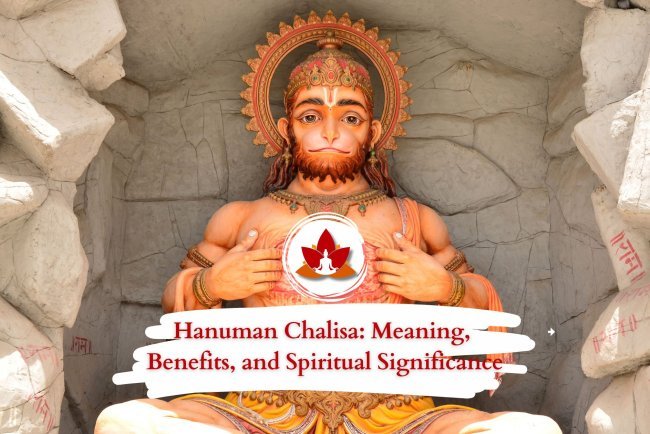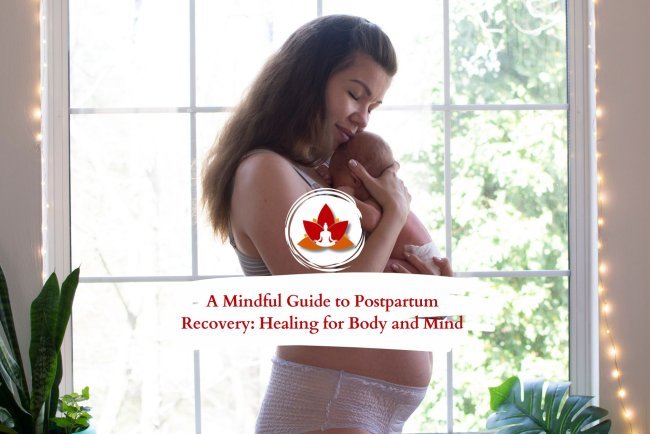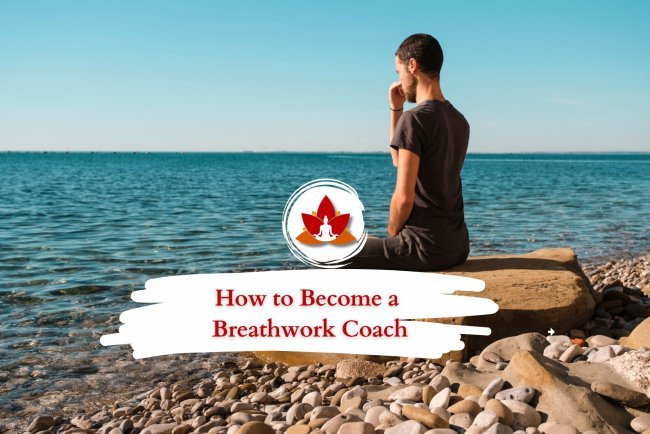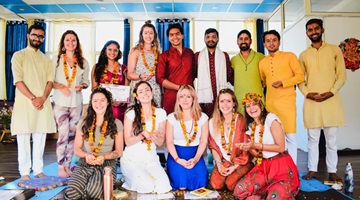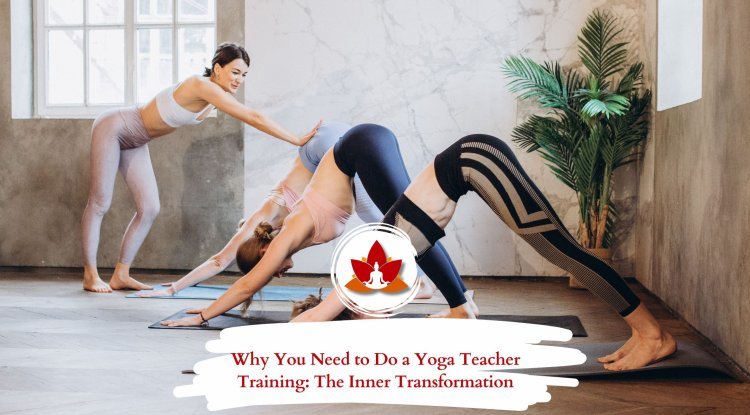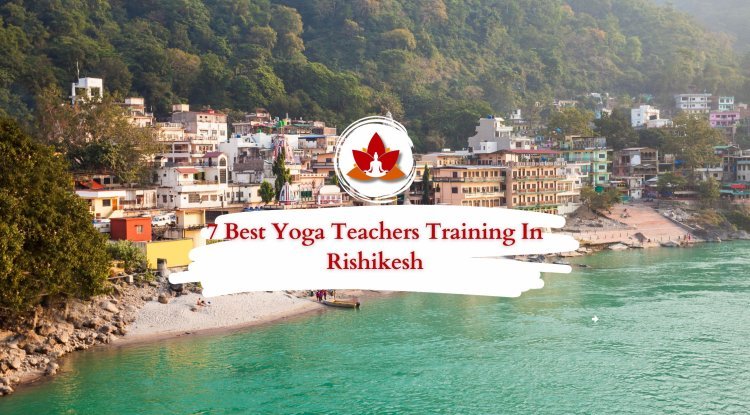Different Types of Yoga: How to Find the Right Style for You

Yoga is a holistic practice that entails physical postures, breathing exercises, meditation, and mindfulness for general well-being. Originating in ancient India, yoga has evolved over thousands of years, offering a path toward physical health, clarity of mind, and spiritual growth.
There are so many different styles of yoga, and that is because people have different needs, preferences, and goals. Some styles, like Ashtanga or Vinyasa, are more connected with acrobatic postures and building strength; others, such as Hatha or Yin Yoga, connect more to relaxation, mindfulness, and soft stretching. Each one has its special benefits, from fitness and experience levels to personal intentions, which can make yoga accessible and useful for all people.
1. Hatha Yoga:
Hatha Yoga: It is the classic form of yoga that seeks to balance the body and mind through physical postures, breathing techniques, and meditation. The word "Hatha" means "force" in Sanskrit, and as such, it describes the effort that this yoga performs on body and mind to bring them together in harmony. Hence, it has been the source of inspiration for several styles of yoga in modern times, which combine strength, flexibility, and awareness.
How Does Hatha Yoga Differ from Other Types of Yoga?
Unlike Vinyasa or Ashtanga, which are much more dynamic forms of yoga that move through postures in a faster sequence, Hatha Yoga is much slower and more intentional. More so, it is emphasized to hold the postures a little longer to develop alignment, control over breathing, and mindfulness. This could make it very accessible for beginners since it gives a soft introduction to doing yoga without the intensity of more advanced styles.
Why Hatha Yoga Is Great for Beginners
Hatha Yoga is the best class for yoga beginners. The class is at a slower pace and emphasizes more fundamental postures to build up strength, flexibility, and awareness without feeling overwhelmed. It also focuses on proper breathing techniques and relaxation, which allow a sense of calm and well-being. The groundwork formed with Hatha Yoga classes allows beginners to be prepared and evolve into other forms of yoga later on.
2. Vinyasa Yoga:
Vinyasa Yoga is a popular yoga style that is characterized by the dynamic relationship between breathing and movement. Sometimes referred to as "flow yoga," Vinyasa is a series of poses through which one flows continuously with inhalation and exhalation. It is fluid, creative, and full of mindfulness cultivated by continuous motion.
How Does Vinyasa Yoga Differ from Other Styles?
While yoga as a practice includes some styles, Vinyasa Yoga is singular in that it is characterized by smooth transitions and is constantly changing. It does not hold static postures for any appreciable time, such as in Hatha Yoga. On the other hand, Vinyasa Yoga encourages a continuous flow of movement. This dynamic nature of the Vinyasa class makes it special because no two classes of Vinyasa can be alike. The other flowing style is Ashtanga Yoga, but it follows a fixed sequence of poses. Vinyasa Yoga, on the other hand, gives more room for variety and deviation; creativity and sometimes spontaneous sequencing can occur in daily practice for both practitioners and instructors alike.
Some identifying characteristics of Vinyasa Yoga involve dynamic flow whereby movement is interwoven with breath. Such flowing styles often include sun salutations, standing poses, backbends, and inversions to balance a practice that can strengthen, stretch, and align the body. Continual movement in Vinyasa Yoga keeps the practitioner engaged, promoting endurance, flexibility, and concentration. In flowing style, this can create meditative states whereby one can find stillness within the movement.
For Whom is Vinyasa Yoga Best?
Vinyasa Flow Yoga will work for those who like to move around and want a practice that incorporates physical movement with mindfulness. It suits those in search of a moderate to vigorous workout with mental relaxation. A beginner can start with slower-paced Vinyasa classes, while for the advanced ones, classes can lead to higher-level postures and faster flows. It is perfect for those who want variation because each class is different and new, challenging both body and mind.
3.Ashtanga Vinyasa Yoga:
Ashtanga Vinyasa Yoga differs from all the other styles in that it is highly structured and disciplined. The idea is that Ashtanga Yoga is a set series of postures that students practice in a predetermined order, while Hatha or Vinyasa Flow yoga classes may have different sequences each class. This allows consistency in which, over time, students will deepen their practice as they continue to become more familiar with each posture and allow the refining of techniques. It is also typified by synchronized breathing: Ujjayi breath, bandhas to focus the mind and create a moving meditation.
Why Choose Ashtanga Vinyasa Yoga?
Ashtanga Vinyasa Yoga would work best for one who is in search of a physically demanding and mentally enriching practice. The repetitive sequences and rigorous pace build up some great strength, stamina, and flexibility; thus, it is ideal for those who enjoy a structured, sweaty workout. This practice is not only a physical discipline for being in shape but also spiritual for mindfulness, inner focus, and self-discipline. The Primary Series is recommended as the starting point for most beginners since it offers basic postures to lay a sound foundation for progress into the higher series.
4.Iyengar Yoga:
Iyengar Yoga is a type of Hatha Yoga that was introduced by B.K.S. Iyengar, which focuses on precision, detail, and the alignment of yoga asanas while performing them. While most other yoga styles could focus on the continuity of movements or the coordination in breathing, Iyengar Yoga is a style of yoga that focuses more on proper alignment while maintaining a pose for long periods. In this style, blocks, belts, and blankets assist practitioners by attaining correct alignment, which makes this type of yoga accessible to all age groups and states of fitness.
Such attention to alignment makes Iyengar Yoga different. While Vinyasa or Ashtanga would mean to flow from one movement into another in a dynamic way, in Iyengar Yoga, movements are made at a much slower and consciously deployed pace. Each pose is entered with much precision, which will make the training ideal for those who enjoy methodical and mindful practice. Props help in making Iyengar Yoga target the acquisition of alignment safely to prevent injuries, and also help to build strength, flexibility, and stability over time.
Why select Iyengar Yoga?
If you are someone who loves precision, detail, and a deeper understanding of the body's mechanics, this is your go-to yoga. This form of yoga not only improves physical alignment but also develops a sense of mindfulness and awareness. It is most helpful for beginners, people healing from injuries, and anyone looking to deepen their practice by paying close attention to the alignment of the body. Iyengar Yoga offers a resourceful foundation from which lifelong yoga practice can unfold to develop holistic well-being and inner balance.
5. Kundalini Yoga
Kundalini Yoga: Practiced through postures, proper breathing techniques, meditation, and chants, this is one of the most unusual yoga styles to awaken the Kundalini energy at the base of the spine. Unlike various other yoga styles focused chiefly on physical postures-asanas, Kundalini Yoga places a high premium on spiritual growth and self-awareness; it is also the "Yoga of Awareness," as many term it. It aims to unlock your potential by coming in contact with your inner energy and consciousness.
How Does Kundalini Yoga Differ from Other Yoga Styles?
By nature, Kundalini Yoga varies in both philosophy and methodology from other kinds of yoga, including Hatha, Vinyasa, and Ashtanga in the following ways:
1. Energy and breath-oriented: Unlike many yoga styles, which are associated with physical feats of flexibility and strength, Kundalini Yoga deals with the proper flow of energy and controlled breathing, pranayama. This type of yoga consists of a set of dynamic breathing techniques, a specific series of postures named kriyas, and chanting of mantras.
2. Emphasis on Spirituality: The other forms do not stress much on spirituality and self-realization as much as Kundalini Yoga. It is the practice of awakening the Kundalini energy dormant at the bottom of the spine and bringing it upwards through the chakras to higher states of awareness.
3. Specific Sessions: Kundalini Yoga has this specific structure of tuning in with a mantra, followed by warm-ups, kriyas, relaxation, meditation, and mantras for closing. This makes it quite different from other fluid styles such as Vinyasa Yoga, which doesn't have any set sequence from one class to another.
6. Yin Yoga
Yin Yoga is the very slow form of yoga that targets deep stretches, relaxation, and inner awareness by holding postures longer, such as 3 to 5 minutes, or more, in counterpart to more dynamic forms of yoga like Vinyasa and Ashtanga yoga that develop flow and strength. During the practice, this mainly addresses the deeper connective tissues, including the ligaments, joints, and fascia.
The basic difference is that Yin Yoga talks about the way of moving and also resting. Whereas most yoga classes tend to 'heat up', strengthen the muscles, and work up the cardiovascular system, Yin Yoga is about cooling down and surrendering. This practice allows practitioners to explore their body and mind in a meditative way, fostering a sense of inner calm and balance. These postures in this style of yoga are passive, wherein one relaxes the muscles and lets gravity do the work. This is in very strong contrast to active, strength-building postures in more yang styles, such as Power Yoga or Bikram.
This serves positively toward the benefits of relaxation and flexibility. The slow pace combined with deep stretches helps release tension and stress, making it an ideal practice for those looking to calm their mind and body. Holding postures for longer periods helps to tap into increased flexibility, allowing the deep tissues time to gradually open and lengthen. In this way, not only the joints but also the body's natural healing processes benefit from the increased circulation and energy flow. Yin Yoga would be excellent for anyone looking to balance a more active yoga practice or simply find a gentle way to come back into balance in their daily life.
7. Aerial Yoga
The contemporary version of yoga, better known as AntiGravity Yoga, merges traditional yoga asanas with Pilates, dance, and the use of a hammock. This innovative style allows participants to emulate many movements that are difficult to perform on a mat and offers a unique combination of physical strength, flexibility, and fun. It is not only a great activity to strengthen your core and further improve your flexibility, but can also be a very playful, adventurous way to spend time for advanced yogis and complete beginners alike.
Who is Aerial Yoga suited for?
Aerial Yoga will suit those who want to vary their fitness routine with elements of strength, flexibility, and fun. Whether one is an avid yoga user looking for a new experience or a beginner in search of something to keep them involved and fit, Aerial Yoga represents a unique and versatile workout. Its capability to merge the advantages of traditional yoga with the excitement of aerial movements makes it attractive in application for anyone willing to discover a new dimension in fitness.
8. Bikram Yoga
Bikram Yoga is a type of yoga performed in a heated environment, combining the practice of physical postures and breathing exercises to enhance flexibility, detoxification, and general well-being. It was developed in the 1970s by Bikram Choudhury. This yoga practice focuses on a concrete sequence of 26 postures and two breathing exercises, meant to target every portion of the body. For many practitioners, Bikram Yoga is both challenging and appealing due to the benefits and discipline involved in performing it.
Bikram Yoga is a style of yoga performed in a heated room at approximately 105°F (40°C) with about 40% humidity. It consists of a series of 26 Hatha Yoga postures and two Pranayama breathing exercises, done for 90 minutes. The heat and humidity help the muscles warm up, increase flexibility, promote sweating, and facilitate the detoxification process within the body. The set sequence systematically works every part of the body, from head to toe, providing a comprehensive workout of both body and mind.
The Appeal of Bikram Yoga
People who like an extreme workout and feel that the added element of heat enhances their practice find Bikram Yoga appealing. The repetition allows one to easily measure their improvement, thus satisfying them. The health and fitness aspects of enhanced flexibility, strength, and endurance bring additional factors such as mental clarity and release from stress. Bikram Yoga is a holistic practice appealing to a wide range of yoga practitioners.
Finding the Right Yoga Style for You: Key Considerations
You can get more out of your practice and assist yourself in reaching your wellness objectives by selecting the appropriate style of yoga. There is an assortment of yoga styles to choose from; thus, knowing your fitness level, your goals, and what appeals to you helps make a better choice.
1. Identify Your Goals: Decide what you want to get from yoga. Do you want to be more flexible, stronger, less stressed, or more focused on mindfulness? For stress reduction and relaxation, Hatha or Restorative Yoga will do the job just fine. On the other hand, your goals may revolve around strength and endurance-building; in such a case, Ashtanga or Power Yoga would be a good choice.
2. Know your fitness level: Hatha Yoga is ideal for beginners since it is considerably slow compared to other yoga styles; Vinyasa Yoga can allow one to take a dynamic flow of movements while Bikram Yoga engages in a set of postures.
3. Personal Preference: Consider what you like in a workout. Do you prefer it to be passive and meditative? Then Yin Yoga may be appropriate. If you like heat and intensity, Hot Yoga may serve you better.
4. Try Classes: It's okay to try out a few styles until you find one you like. Many studios allow you to take an introductory class or a trial period to get a feel for various forms and see what works best for you.
5. Yoga Instructors and Studios: Yoga instructor's teaching style and the studio's ambiance also influence your yoga practice. Find the studio that suits you in terms of comfort and where the instructors are certified to teach.
Keeping these factors in mind, goals, fitness level, personal preferences, and trying different approaches would be able to find a form of yoga that best fits your needs and has an impact on your overall well-being.
Faq's:
Q. What Are the Different Types of Yoga?
A. The various types of yoga include Hatha, Vinyasa, Ashtanga, Iyengar, Kundalini, Bikram, Yin, Restorative, Power Yoga, and many others. Each of these has its specific advantages and will vary regarding the focus on physical postures or spiritual and mental aspects.
Q. What Is the Difference Between Hatha and Vinyasa Yoga?
A. Hatha yoga greatly employs basic poses with slower movements; hence, it is much easier for a beginner. Vinyasa yoga, on the other hand, links breath with movements in such a way that makes one continuous flow, thus giving an even more dynamic workout.
Q. What Are the Benefits of Practicing Yin Yoga?
A. Yin yoga targets deep connective tissues, improves flexibility, and enhances joint health. Additionally, its meditative approach may be associated with a reduction in stress and enhanced mindfulness.
Q. Is it Possible for Beginners to Start with Ashtanga Yoga?
A. Ashtanga yoga follows a more intense and structured approach. While one could theoretically start Ashtanga as a beginner, it's often recommended that one already has some basic knowledge of the yoga poses and practice.
Q. What is Kundalini Yoga, and what are the benefits derived from it?
A. Kundalini yoga incorporates breathwork, chanting, and poses to awaken spiritual energy and improve mental clarity. It helps in improving creativity, reducing anxiety, and granting emotional balance.
Q. What is the difference between Bikram Yoga and Hot Yoga?
A. Bikram yoga involves a series of 26 set poses in a heated room, whereas hot yoga can also be a version of any style where it is practiced in a heated environment, with variation in the poses and sequences used.
Q. What Is Iyengar Yoga, and Who Is It Best Suited For?
A. The focus of Iyengar yoga is alignment and precision in every posture, usually with the help of blocks and straps. Hence, it is good for injured persons and those who wish to align their postures.
Q. What Are the Health Benefits of Power Yoga?
A. Power yoga is a dynamic, fitness-based approach that strengthens, stretches, and tones the body to create stamina. The style is ideal for effective weight loss, assurance of cardiovascular health, and overall toning of the body.
Q. Is Restorative Yoga Effective for Stress Relief?
A., considering that restorative yoga involves relaxation and soft stretching, it is ideal in the context of stress relief, sleep improvement, and recovery after physical or mental exhaustion.
What's Your Reaction?







